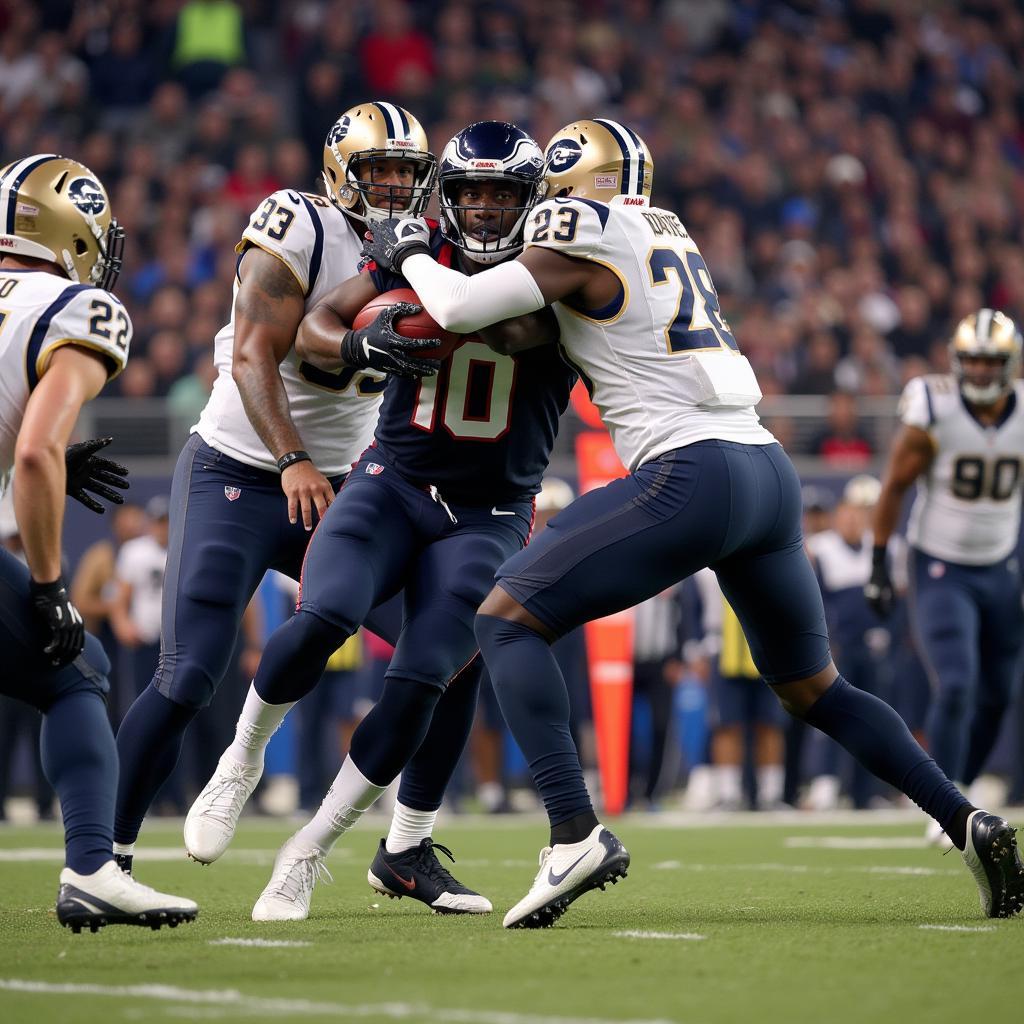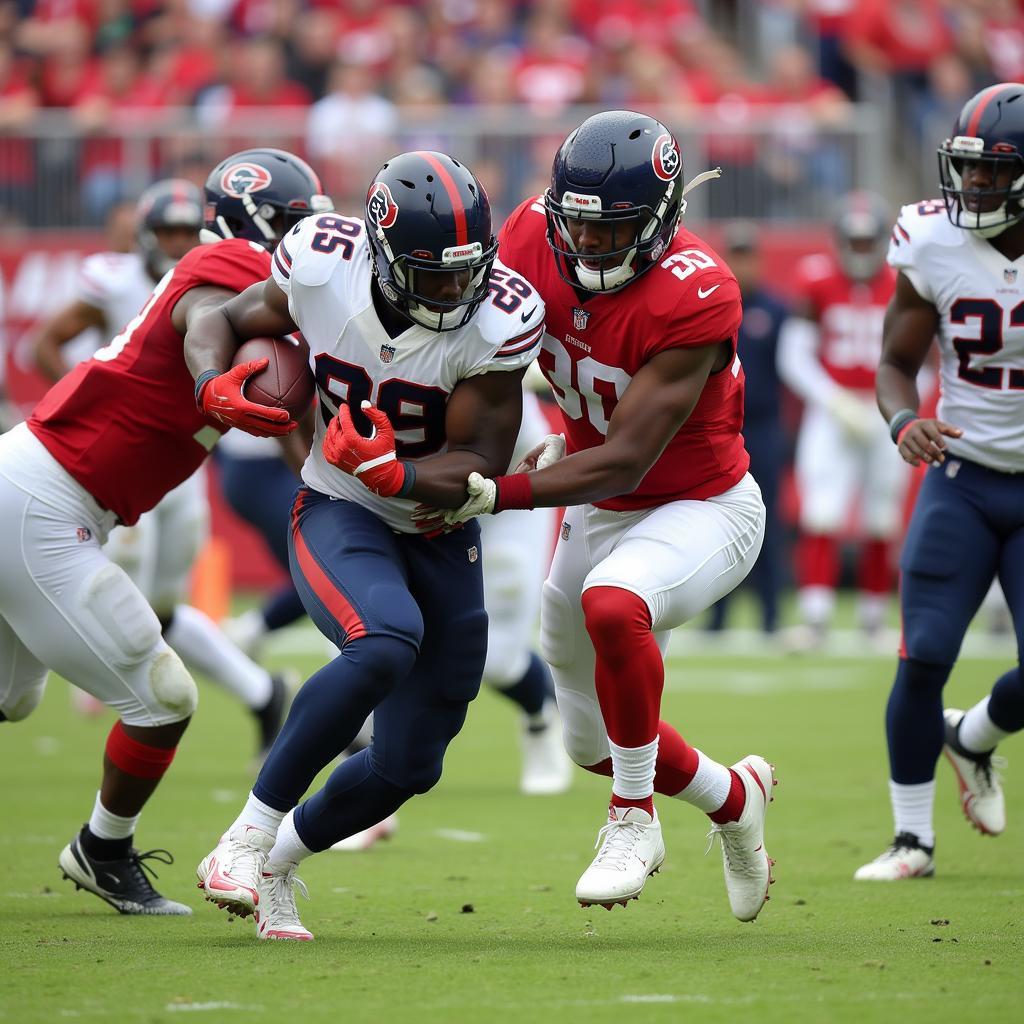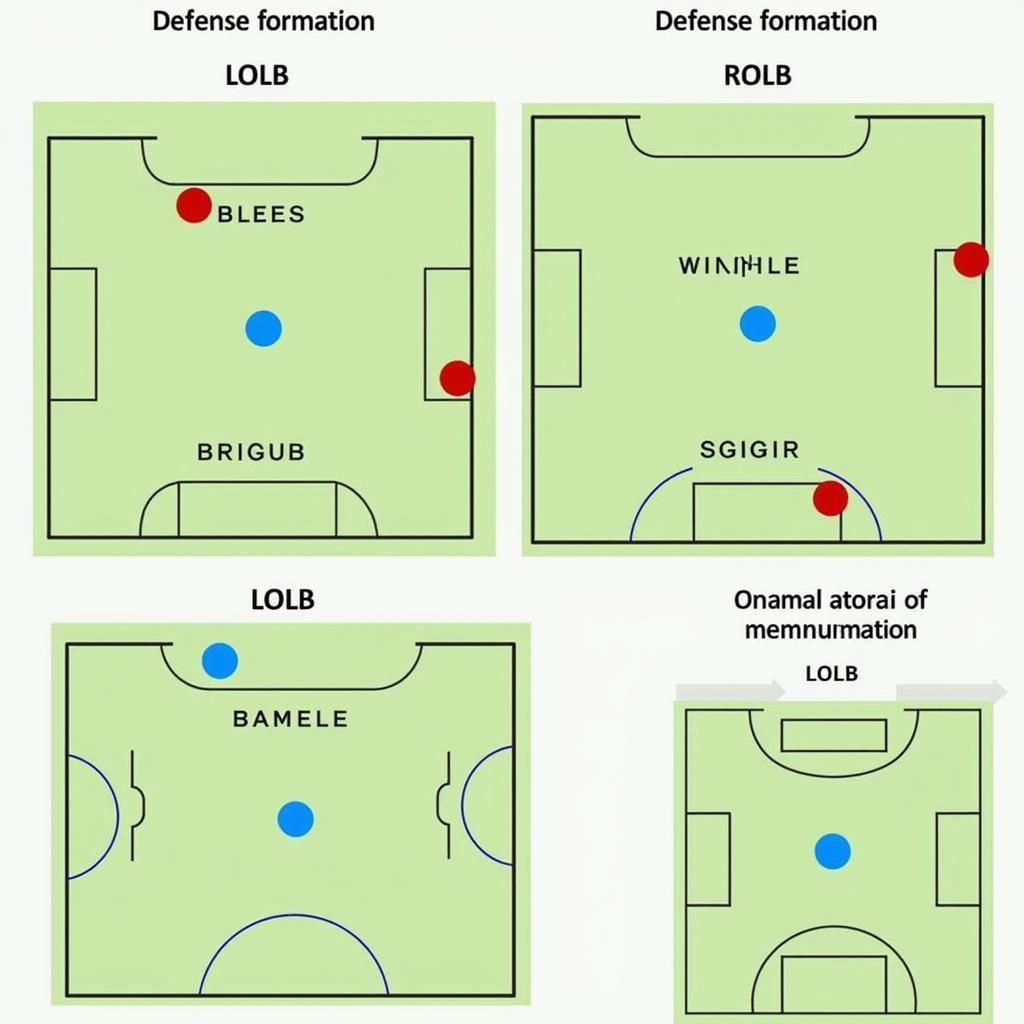The world of football is full of nuanced positions, and few are as vital yet misunderstood as the outside linebacker. While often grouped together, the “LOLB” and “ROLB” designations reveal distinct roles and responsibilities that significantly impact a team’s defensive strategy. Understanding the differences between these positions sheds light on their impact on pass rushing schemes, run defense, and overall defensive formation.
Defining the Outside Linebacker: A Two-Pronged Approach
Before delving into the specific distinctions, it’s crucial to understand the core function of an outside linebacker. Unlike their middle linebacker counterparts who are typically responsible for covering the middle of the field, outside linebackers operate on the peripheries of the defensive line, tasked with a dual purpose: rushing the quarterback and defending against both running and passing plays.
LOLB: The Blindside Blitzer
The “LOLB,” or “left outside linebacker,” is typically positioned on the left side of the defensive formation. This positioning is strategically significant as it often places them on the quarterback’s “blind side,” assuming a right-handed quarterback.
Key Responsibilities of an LOLB:
- Blindside Pass Rush: LOLBs are often tasked with applying pressure on the quarterback from the blindside, aiming to force hurried throws or create sack opportunities.
- Containment on Run Plays: Their positioning requires them to control the edge of the defensive line, preventing running backs from breaking outside for big gains.
- Coverage Responsibilities: Depending on the defensive scheme, LOLBs might be responsible for covering tight ends, running backs, or even slot receivers in pass coverage.
 Left Outside Linebacker Pass Rush
Left Outside Linebacker Pass Rush
ROLB: The Versatile Defender
The “ROLB,” or “right outside linebacker,” mirrors the LOLB on the opposite side of the defensive formation. However, their responsibilities can differ slightly due to the quarterback’s typical throwing hand and the flow of offensive plays.
Key Responsibilities of an ROLB:
- Run Support Emphasis: While still involved in pass rushing, ROLBs often have a more significant role in run support due to the tendency for running plays to flow away from the quarterback’s throwing arm (typically the right).
- Pass Coverage: Depending on the defensive scheme, ROLBs might find themselves in pass coverage more frequently than their LOLB counterparts, often tasked with covering tight ends or running backs leaking out into the flat.
- Creating Turnovers: Positioned on the strong side of the formation, ROLBs are strategically placed to make plays on forced fumbles or interceptions, particularly on plays designed to go away from the LOLB’s pressure.
 Right Outside Linebacker Run Stop
Right Outside Linebacker Run Stop
LOLB vs. ROLB: A Matter of Scheme and Skillset
While the above outlines general responsibilities, it’s important to note that the specific roles of LOLBs and ROLBs can be fluid and adapt based on the defensive scheme employed by the team. Some defensive coordinators might prioritize speed and pass-rushing abilities in their LOLBs, while others might value versatility and coverage skills in their ROLBs.
 LOLB and ROLB in Different Defensive Formations
LOLB and ROLB in Different Defensive Formations
Conclusion: Two Sides of the Same Defensive Coin
Ultimately, both LOLBs and ROLBs are essential components of a successful defense. They represent the adaptability and multi-faceted nature of modern football, demanding a blend of physicality, speed, and football IQ. Understanding the nuances of these positions allows for a greater appreciation of the strategic complexities that unfold on every snap.
FAQ
- What is the main difference between an LOLB and an ROLB? While both rush the passer and defend against the run, LOLBs are often focused on the quarterback’s blind side, while ROLBs tend to have a greater emphasis on run support and coverage.
- Do LOLBs and ROLBs always have these specific roles? No, their roles can vary depending on the defensive scheme employed by the team.
- What skills are most important for outside linebackers? A combination of speed, strength, tackling ability, coverage skills, and football IQ are all crucial for outside linebackers.
Have other questions?
Contact us! We are available 24/7 to assist you.
Phone Number: 0902476650
Email: [email protected]
Address: 139 Đ. Võ Văn Kiệt, Hoà Long, Bà Rịa, Bà Rịa – Vũng Tàu, Việt Nam.





